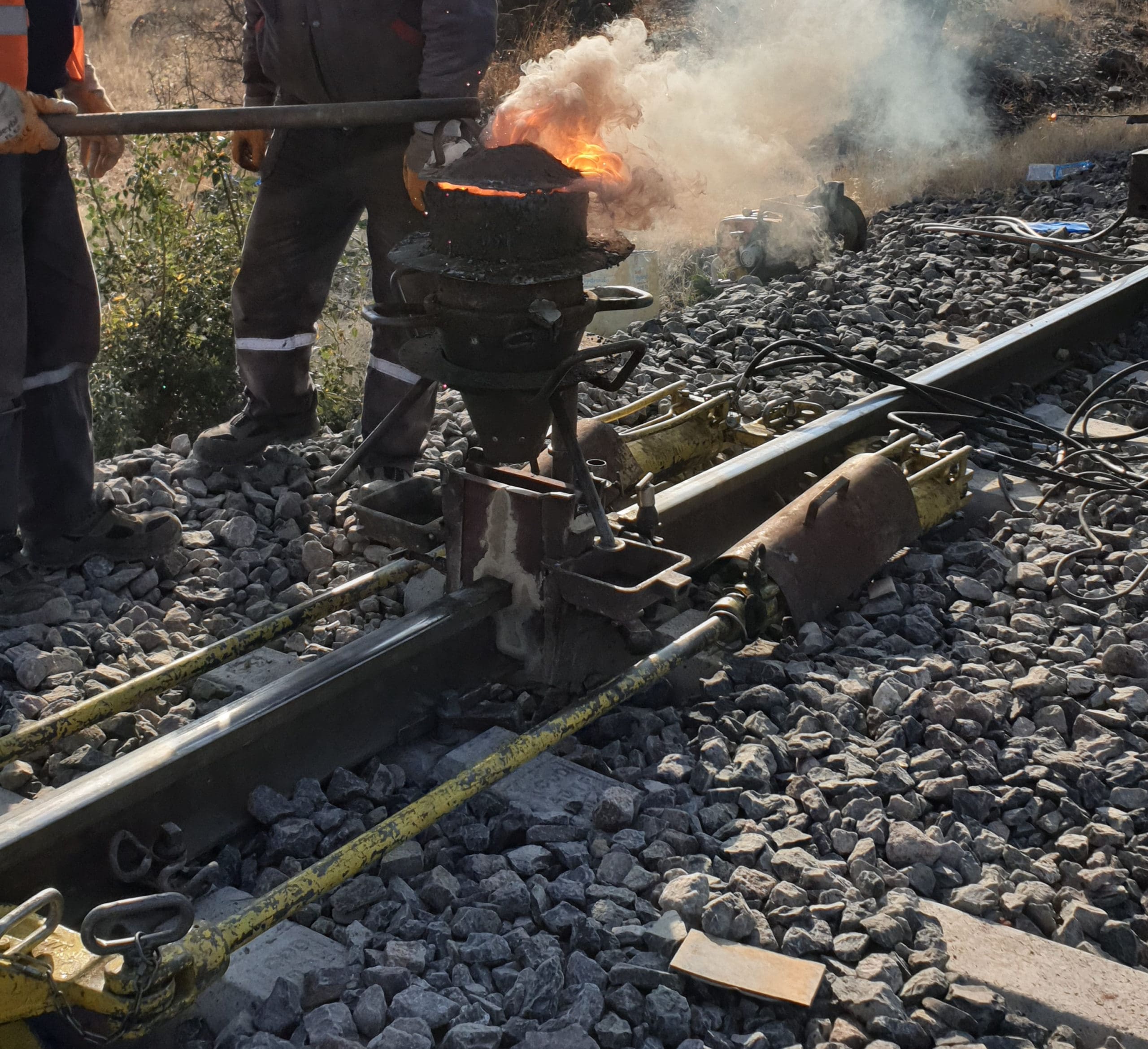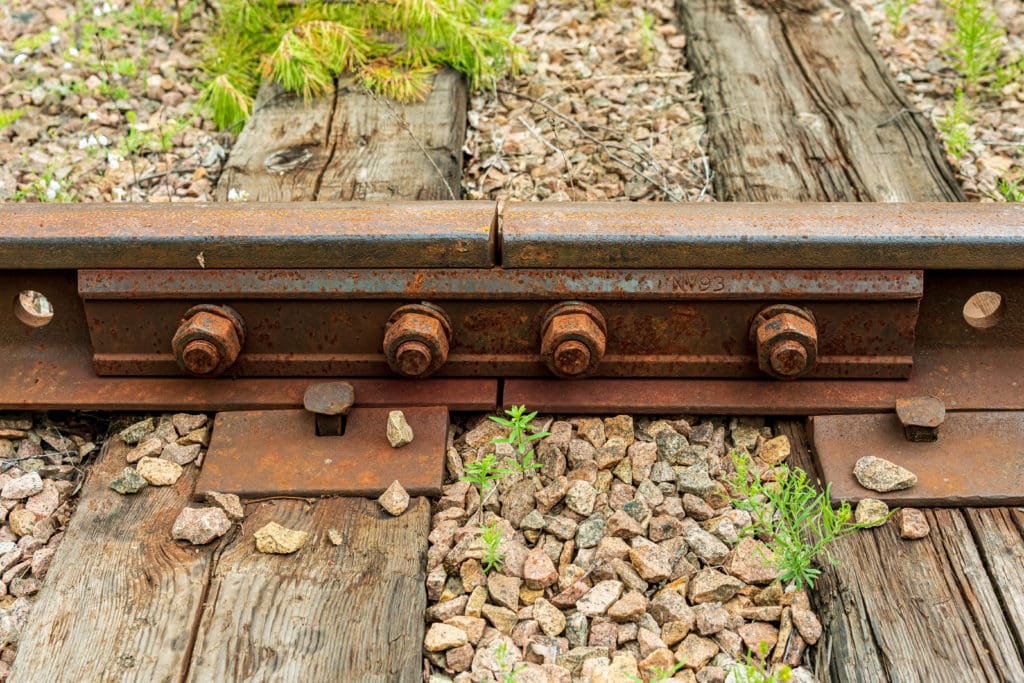
Methods for Joining Rail
Railroad operations employ welding crews to join sticks of rail together. In the past, workers would fasten metal fish plates to corresponding sides of two sticks of rail. Thus, they would bridge the two pieces together at their joint. Rail of this configuration became known as jointed rail.
Most railroads have shifted from Jointed Rail to Continuous Welded Rail (CWR). When welders join multiple sticks of rail into one, it is called CWR, as the name implies. CWR features improved structural integrity and reduced maintenance costs over its jointed counterparts.
Thermite Welding
Thermite Welding is the most popular welding practice Railroad Welding Crews utilize to create CWR. Before welding, they must grind each end of the facing rails clean. Once ground clean, the joint, which should feature a gap of approximately 1”, is encased in a hollow form and preheated with an oxy or propane torch. Suppose the corresponding rails’ opposite joints are already welded to other rails, as they typically are. In that case, a Rail Puller, powered hydraulically, whether by a power pack or a Welding Truck’s Tool Circuit, is used to accomplish the 1” gap. Next, a crucible is set above the form and filled with thermite, a pyrotechnic composition of metal powder and metal oxide.
Once ignited, the thermite rapidly morphs into molten metal. It pours into the form below and fills the gap between the rails. It then cools, consequently welding two sticks of rail into one. Crucible and form removed; workers may address excess metal. Although metal may be beaten or chiseled away, sometimes welding crews use Weld Sheers, which utilize two sheer blades that are compressed together, by means of a hydraulic cylinder, to sheer excess metal protruding from the joint’s kerf.
Equipment Used in Welding
Welding Crews require Hi-Rail Vehicles that:
- Adequately House And Haul Material, Tools, And Equipment
- Allows The Operator To Handle Material Efficiently
- Provides Hydraulic Supply For Specialty Tools
- Features Railroad & Welding Focused Safety Features.
Custom Truck’s Welding Series (438T, 538T, 538C) manages to offer all of this and more.
Custom Truck’s 438T is a medium-duty option that features a platform body specifically designed to house thermite welding kits and related equipment. The body rests on an F-550 chassis and features an overhead material rack, oxy/acetylene bottle storage, a fire suppression system, a 370-degree radio remote-controlled telescopic crane with an 11,500 ft/lb rating, a fold-down tool tray, a rail puller rack, and a 5/10 GPM hydraulic tool circuit.
The big brother to our 438T, the 538T features a heavy-duty F-750 chassis, a 29,500 ft/lbs remote control 21’ telescopic crane, specialized thermite kit welding storage, fire suppression, a fold-down tool tray, a puller rack, and an overhead rail rack.
The 538C features all the trappings of the 538T but upgrades the chassis to a Freightliner 108SD. It also features a saddle between the chassis and the body, which acts as a mount for an AirPak welder.
To learn more about these vehicles, please call today!





